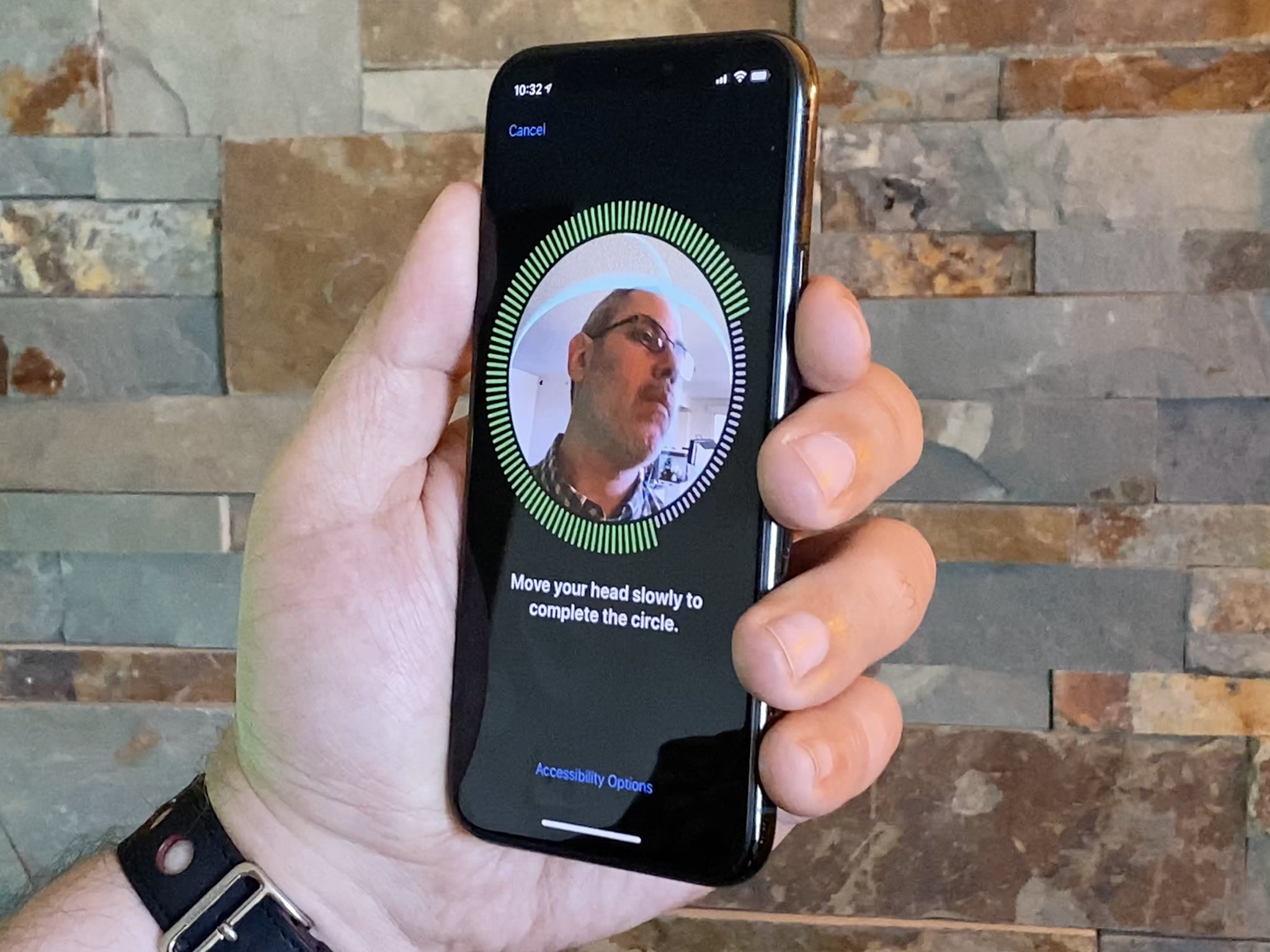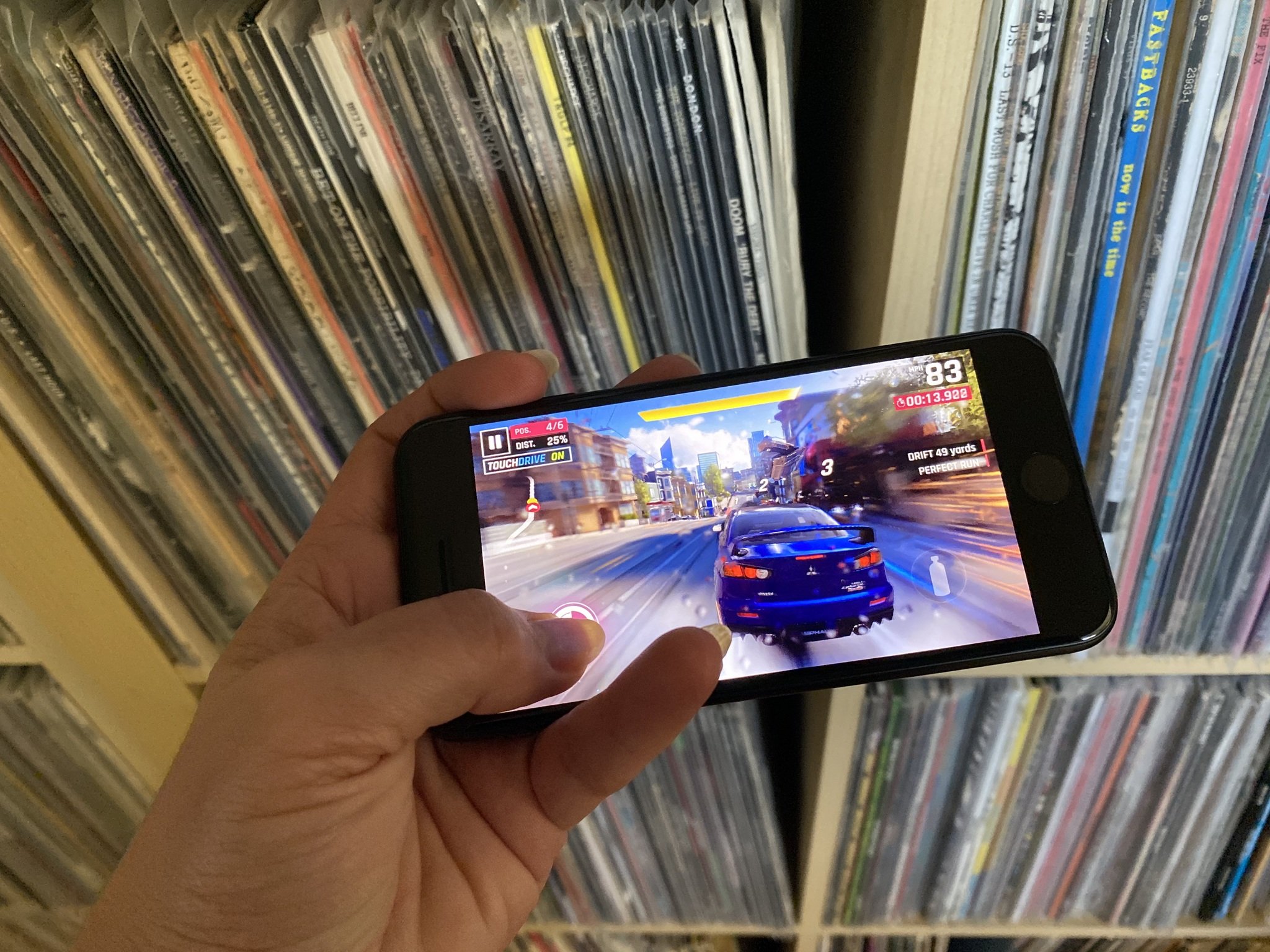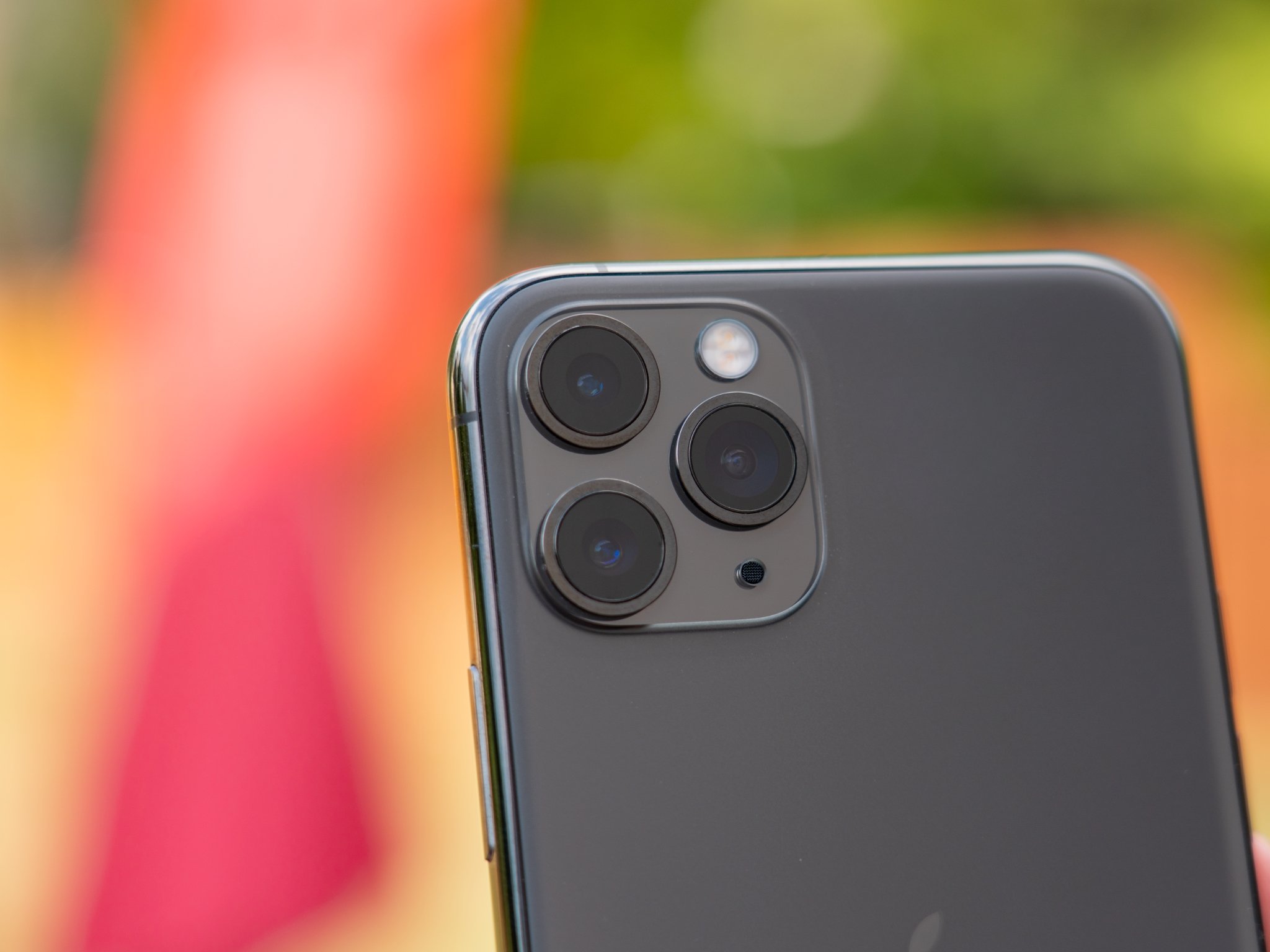Should you get an iPhone SE now or wait for the iPhone 12 'mini'?

If you need a new iPhone now, should you get the new iPhone SE right now, or should you try and hold out for the rumored smaller iPhone 12 'mini' coming later this fall?
And… how much later this year might that be exactly?
iPhone SE vs. iPhone 12: Design
The iPhone SE is either a retread or a classic, depending on your point of view. To bring costs down, Apple re-used the the body of the iPhone 8.
That means it has a mullet and goatee… Sorry, forehead and chin bezels, straight out of 2014. Same with the smooth, smooth, rounded edges. The glass and aluminum sandwich, though… that's from 2017.
It's a design Apple introduced with the iPhone 6 and one they still use today for the iPhone 11.
The iPhone 12… well, that doesn't exist yet. But, the usual rumors and leaks that swirl around before any new iPhone release heavily suggest it'll be retro too… in it's own way.
Like the iPhone 5 or original iPhone SE, with squared off sides instead of curves, losing the bezels like current iPad Pro, and adding the glass back of the more recent iPhone designs. Just all retro-future chic hybrid.
Master your iPhone in minutes
iMore offers spot-on advice and guidance from our team of experts, with decades of Apple device experience to lean on. Learn more with iMore!
Yeah, the phone so many jaded journos called "boring" at launch in now the most exciting this in years. Go figure.
- So, if you like the current design, the iPhone SE is probably your last chance to get it.
- If you desperately want a new look, the iPhone 12 should give it to you.
iPhone SE vs. iPhone 12: Display
The iPhone SE has 4.7-inch LCD Retina density, P3 wide-gamut display. That means the pixels should be too small for an average person to see at an average viewing distance, and the reds and greens should be richer and more vibrant than old-school sRGM panels.
It's got TrueTone, which means it can dynamically match the color temperature of the environment, so whites never look too warm and yellow or cool and blue, just proper, paper white.
In other words, it's the exact same size and density as the iPhone 6 and quality as the iPhone 8.
Rumors for the iPhone 12 — specifically for this comparison — is that Apple is going to offer a smaller version. An iPhone mini, so to speak. At least, the smallest modern iPhone version ever. With a 5.4-inch display.
And, that unlike the iPhone 11, which was LCD like the iPhone SE, it'll be OLED, closer to the iPhone 11 Pro.
It won't be quite as good OLED as the Pro, because those panels are hella expensive, but it'll still have deeper blacks, better detail in the highlights, higher contrast ration, and fingers crossed, at least HDR, high dynamic range, support. If not XDR, extreme dynamic range, like the pros.
It'll also almost certainly still have the issues that still plague all OLED displays as well, things like off-axis color shifting, and pulse width modulation at lower brightness levels, which annoy some people.
But it'll still go corner to rounded corner, and edge to edge… minus one notch.
And that means even though the display is bigger the overall phone size — the casing it's in — should be even smaller. Maybe even closer to the original iPhone SE size.
Yeah, I know.
- So if you could care less about the display and size or actually prefer old-school LCD, get the iPhone SE.
- If you want OLED, even if it's not Pro-level OLED, and in the smallest package possible, get the iPhone 12.
iPhone SE vs. iPhone 12: Security

The iPhone SE still has a Home button, which means it also still has Touch ID. That's Apple's biometric fingerprint identification system
When you put your finger down on the Home button, the capacitive ring triggers a photo of the ridges and swirls on your finger, turns that into math, sends it to the Secure Enclave, compares it with the registered prints on file, and if it matches, releases a token that unlocks your phone or app or approves your transaction.
As long as your finger can reach the sensor, you can unlock it, even if you're not looking at it. But, you can't be wearing gloves and it can be sensitive to moisture levels if your finger is excessively damp or dry.
The iPhone 12 will almost certainly not have a Home button and so, use Face ID. That's Apple's biometric facial geometry scanner.
Housed in the infamous notch, it uses a dot projector, flood illuminator, and infra-red sensor to take a 3D snapshot of your face, convert that data to math, send it to the Secure Enclave, uses a neural engine to compare it with the facial geometry on file, and if they match, releases the same kind of approval token.
As long as the front facing camera can see your open eyes and nose, you can unlock, even if you're not touching it. But, you can't be wearing IR-blocking sunglasses or a mask that covers your nose and it can be sensitive to direct sunlight blinding the sensor.
All of these things on Touch ID and Face ID can be worked around, of course, but depending on how you live your life, one could be much more convenient, and way less of a pain than the other.
- So, if using a finger print is easier, you're going to want to use an iPhone SE.
- But, if scanning your face feels the just effortless, you're going to feel the iPhone 12.
iPhone SE vs. iPhone 12: Performance

Despite it's classic… or dated looks — I'm not here to judge, you phone you! — the iPhone SE packs very modern silicon under the covers.
Specifically, Apple's A13 Bionic chipset, which isn't just snappy now, but should keep running iOS updates, and well, for at least r another 4 years at least.
I mean, the 2015 iPhone 6s is getting iOS 14 this year, in 2020, and that tends to be the rule more than the exception.
The iPhone 12, though, should be getting the even more efficient, even higher performance A14… Trionic? It can't be Bionic again, can it?
And that means not only will it be stronger, better, faster, but it should keep getting updates even a year longer.
- If you don't really care about an extra year of chipsets or updates, then the iPhone SE will still be faster than most other phones you can buy for at least a few more months.
- If you want the most advanced silicon you can get and updates for as long as you can get them, the iPhone 12 will give you that.
iPhone SE vs. iPhone 12: Camera

The iPhone SE's camera is a bit of a Chimera. It's the same basic hardware as the iPhone 8 but it has the image signal processor of the iPhone 11, and some computational tricks all its own.
That all comes together to make it shoot pretty much like an iPhone XR.
Only one wide angle lens, no night mode, but decent portrait mode and some of the best video this side of an iPhone 11.
The iPhone 12, though, will be an iPhone 12. And, if there's one thing we can count on, it's that every time there's a new iPhone, there'll be a better camera.
That should mean, at the very least, a wide angle and ultra wide angle lens, and with a next-generation image signal processor for even better night mode, portrait mode, smart HDR, and likely the best quality video on a phone yet.
- So, if all you need is a good but not necessarily the best camera, the iPhone SE will do you fine.
- If you demand the latest and greatest when it comes to cameras, then you're going to want to wait for iPhone 12 time.
iPhone SE vs. iPhone 12: 5G
The iPhone SE has an Intel modems that, despite AT&T's so-shady-they-should-be-illegal 5Ge labels, absolutely caps out at 4G LTE.
Speed is decent. Coverage is decent. But there are still a lot of people, especially outside big cities, that don't get a lot of signal in a lot of places.
The iPhone 12, including the small one, is supposed to be getting Qualcomm modems back and ones that can run on the new fangled 5G networks.
Now, only the Pro models are expected to get the super fast, but super low-range mmWave technology.
All of them, though, including again the small one, are expect to get at least Sub-6, maybe even Sub-9 since the spectrum keeps creeping up below the high-band.
And, while nowhere nearly as fast, it's far more robust, and as the networks roll out, should finally give everyone outside big cities all the bars they've been promised for all these years.
- So, if you're fine with LTE speeds and connection quality, you'll be fine with an iPhone SE.
- But if you want or need something more, the iPhone 12 should give it to you, network rollout depending.
iPhone SE vs. iPhone 12: Pricing
The iPhone SE has been out for about four months already, so it's price is a known quantity — $399 in the U.S. which is great, but more in some other countries, which is not so great.
The iPhone 11 was $699, which is super affordable as new Apple flagships go. And rumor has it, the iPhone 12 will stay around the same price.
The 5.4-inch model might even be a little less expensive, around $649, with the 6.1-inch model averaging it back out at $749.
So, if your budget is US$500 and not a penny more, you'll want the iPhone SE.
If you're willing to go higher, you'll get way more bang for your buck with the iPhone 12, though we'll have to see how much buck that bang ends up costing.
Also, Apple may keep the base model iPhone 11 around for $100 less once the iPhone 12 is announced, if that's meaningful for you.
iPhone SE vs. iPhone 12: Advice
So, a lot of you know my real talk advice by now:
Wait as long as you possibly can to buy, then buy when you absolutely need to buy, buy the best you can afford at the time, and then enjoy the hell out of it, because there will always be something new and something next.
In other words, if you really need an iPhone now, get an iPhone SE now. If you don't, the iPhone 12 should be here by late fall, probably like iPhone X or iPhone XR time, around October, and see what it has to offer.
Then, buy what best suits your budgets and needs at the time, and have zero regrets.

Rene Ritchie is one of the most respected Apple analysts in the business, reaching a combined audience of over 40 million readers a month. His YouTube channel, Vector, has over 90 thousand subscribers and 14 million views and his podcasts, including Debug, have been downloaded over 20 million times. He also regularly co-hosts MacBreak Weekly for the TWiT network and co-hosted CES Live! and Talk Mobile. Based in Montreal, Rene is a former director of product marketing, web developer, and graphic designer. He's authored several books and appeared on numerous television and radio segments to discuss Apple and the technology industry. When not working, he likes to cook, grapple, and spend time with his friends and family.
